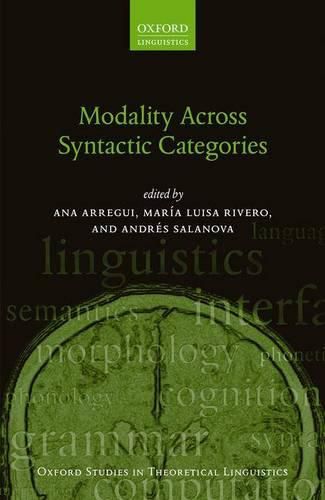Readings Newsletter
Become a Readings Member to make your shopping experience even easier.
Sign in or sign up for free!
You’re not far away from qualifying for FREE standard shipping within Australia
You’ve qualified for FREE standard shipping within Australia
The cart is loading…






This volume explores the linguistic expression of modality in natural language from a cross-linguistic perspective. Modal expressions provide the basic tools that allow us to dissociate what we say from what is actually going on, allowing us to talk about what might happen or might have happened, as well as what is required, desirable, or permitted. Chapters in the book demonstrate that modality involves many more syntactic categories and levels of syntactic structure than traditionally assumed. The volume distinguishes between three types of modality: ‘low modality’, which concerns modal interpretations associated with the verbal and nominal cartographies in syntax; ‘middle modality’, or modal interpretation associated to the syntactic cartography internal to the clause; and ‘high modality’, relating to the left periphery. It combines cross-linguistic discussions of the more widely-studied sources of modality with analyses of novel or unexpected sources, and shows how the meanings associated with the three types of modality are realized across a wide range of languages.
$9.00 standard shipping within Australia
FREE standard shipping within Australia for orders over $100.00
Express & International shipping calculated at checkout
This volume explores the linguistic expression of modality in natural language from a cross-linguistic perspective. Modal expressions provide the basic tools that allow us to dissociate what we say from what is actually going on, allowing us to talk about what might happen or might have happened, as well as what is required, desirable, or permitted. Chapters in the book demonstrate that modality involves many more syntactic categories and levels of syntactic structure than traditionally assumed. The volume distinguishes between three types of modality: ‘low modality’, which concerns modal interpretations associated with the verbal and nominal cartographies in syntax; ‘middle modality’, or modal interpretation associated to the syntactic cartography internal to the clause; and ‘high modality’, relating to the left periphery. It combines cross-linguistic discussions of the more widely-studied sources of modality with analyses of novel or unexpected sources, and shows how the meanings associated with the three types of modality are realized across a wide range of languages.